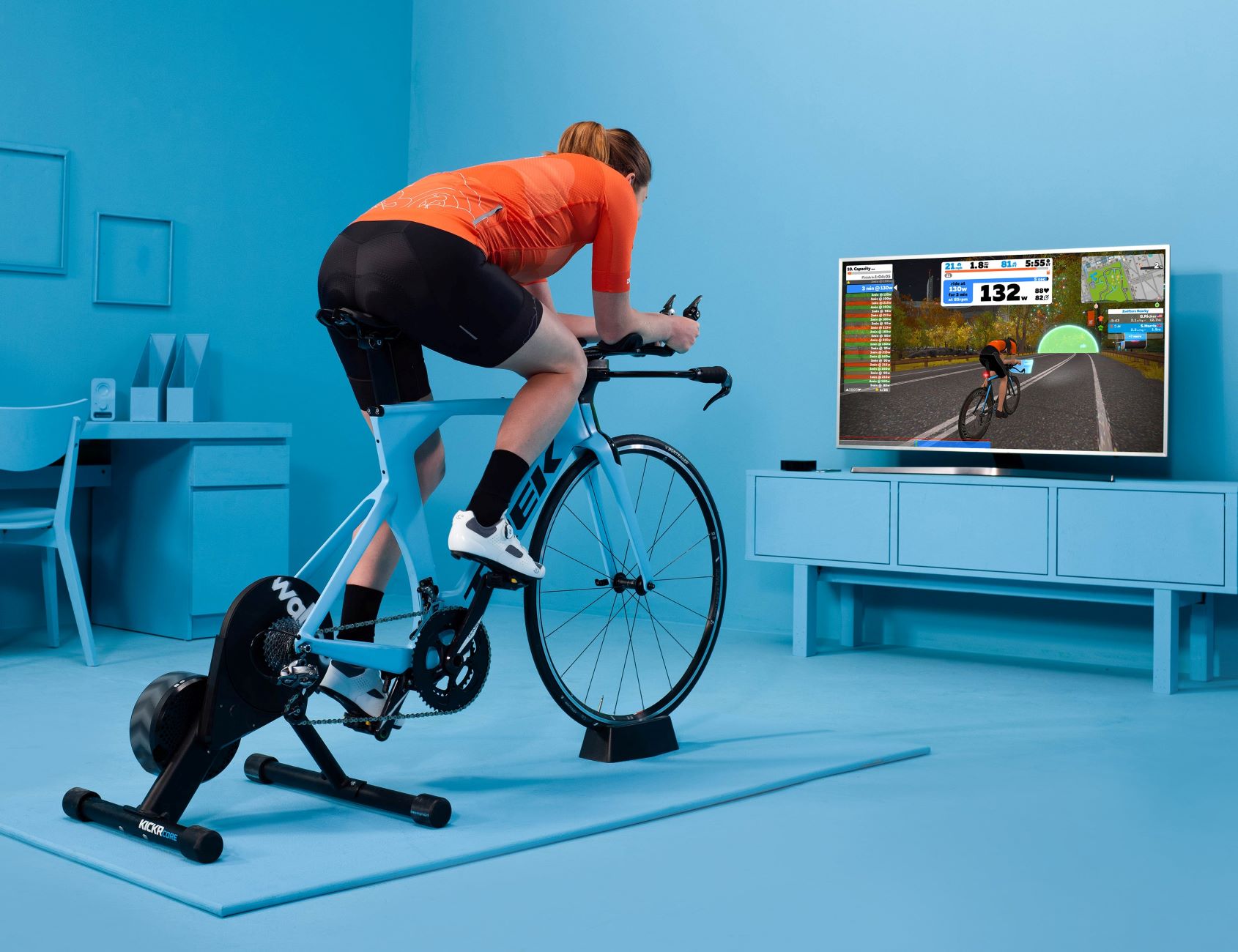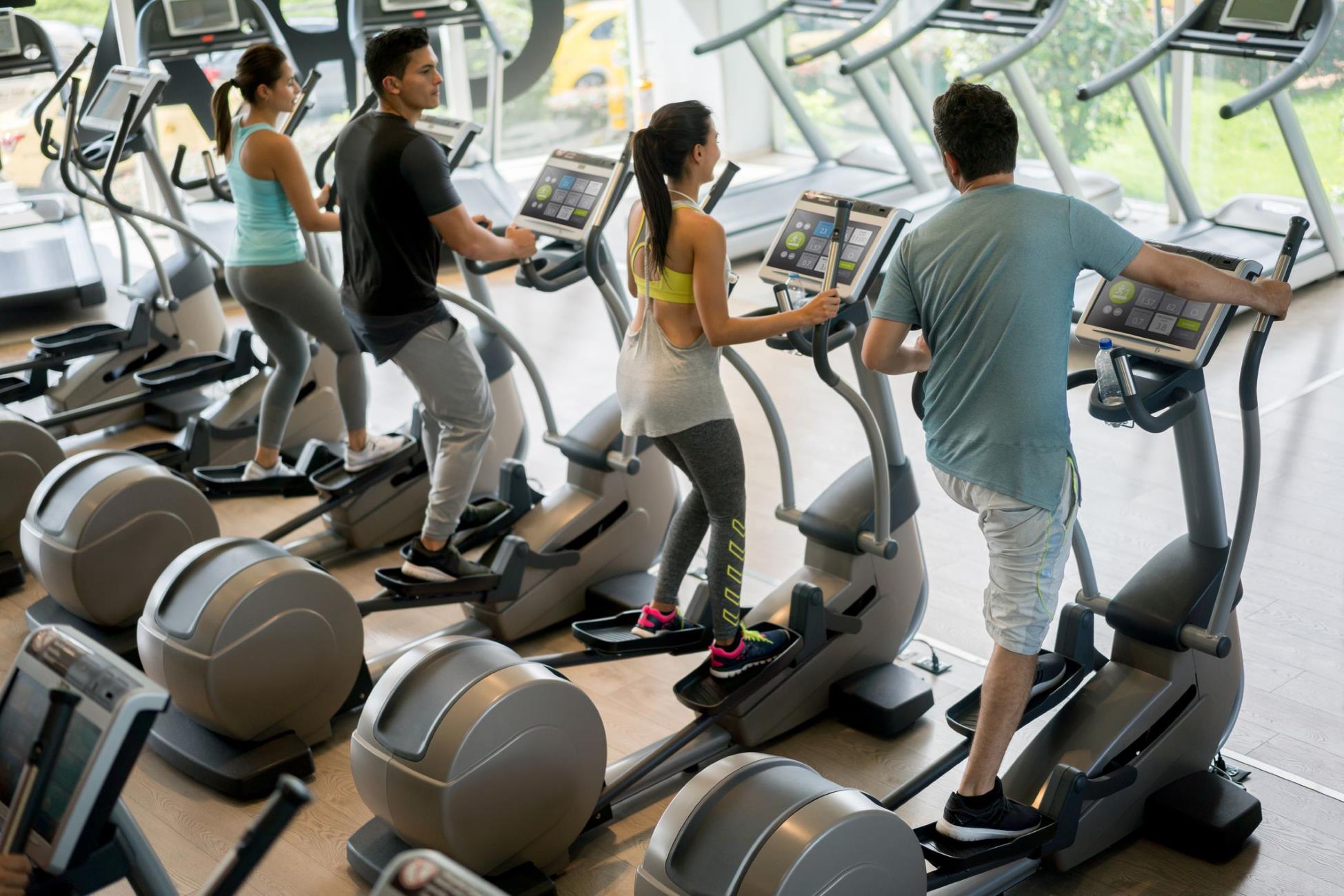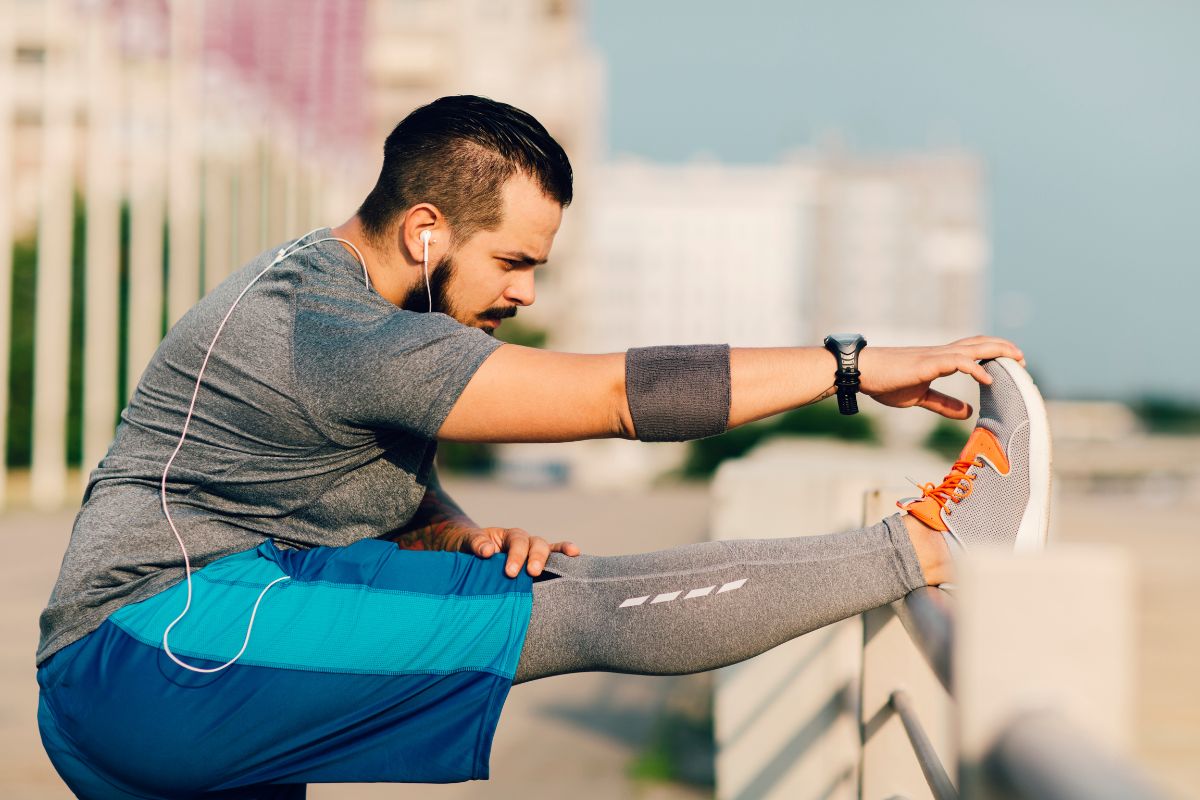Home>Training & Techniques>Cross-Training>The Value Of Cross Trainers For Runners: Exploring The Benefits


Cross-Training
The Value Of Cross Trainers For Runners: Exploring The Benefits
Published: February 20, 2024
Discover the benefits of cross-training for runners with our comprehensive guide. Learn how cross trainers can improve your performance and reduce the risk of injury.
(Many of the links in this article redirect to a specific reviewed product. Your purchase of these products through affiliate links helps to generate commission for Therunningadvisor.com, at no extra cost. Learn more)
Table of Contents
Understanding the Role of Cross Trainers in Running
Cross trainers, also known as cross-training shoes, play a pivotal role in the training regimen of runners. These versatile shoes are designed to provide support and stability across a range of activities, making them an essential component of a runner's toolkit. Understanding the specific benefits of cross trainers can shed light on their importance in enhancing overall performance and minimizing the risk of injury.
-
Versatility: Cross trainers are engineered to accommodate various movements, including lateral, forward, and backward motions. This versatility is particularly beneficial for runners, as it allows them to engage in cross-training activities such as strength training, cycling, and elliptical workouts without compromising on support and comfort.
-
Support and Cushioning: The design of cross trainers incorporates ample cushioning and support to mitigate the impact of repetitive movements associated with running. This is crucial for safeguarding the joints and muscles, especially during high-intensity training sessions.
-
Stability and Balance: Cross trainers are equipped with features that promote stability and balance, which are essential for runners seeking to improve their overall performance. By providing a secure base, these shoes enable runners to execute movements with precision and confidence, ultimately contributing to enhanced agility and coordination.
-
Multi-Surface Traction: The outsoles of cross trainers are engineered to deliver reliable traction on various surfaces, including gym floors, tracks, and outdoor terrain. This feature is invaluable for runners who engage in diverse training environments, ensuring that they can maintain a firm grip and minimize the risk of slips and falls.
-
Ankle Support: Many cross trainers are designed with ankle support in mind, offering reinforced structures that help stabilize the ankle joint during lateral movements. This is particularly advantageous for runners, as it reduces the likelihood of sprains and other ankle-related injuries.
In essence, the role of cross trainers in running extends beyond mere footwear; it encompasses a comprehensive approach to training that prioritizes versatility, support, stability, and injury prevention. By recognizing the unique advantages of cross trainers, runners can make informed decisions about integrating these shoes into their training routines, thereby optimizing their overall performance and well-being.
Improving Overall Strength and Stability
Cross trainers are instrumental in enhancing the strength and stability of runners, offering a multifaceted approach to training that extends beyond traditional running shoes. These versatile footwear options are designed to fortify the muscles and joints, thereby contributing to a more robust and resilient physical foundation for runners. By incorporating cross trainers into their training regimen, runners can experience a myriad of benefits that directly impact their overall strength and stability.
Building Muscular Endurance
One of the primary advantages of utilizing cross trainers is the capacity to engage a broader spectrum of muscles. Unlike conventional running shoes, cross trainers are engineered to facilitate a range of movements, including lateral, forward, and backward motions. This versatility enables runners to target muscle groups that may not be adequately engaged during running alone, thereby fostering balanced muscular development and endurance. By diversifying the stress placed on different muscle groups, cross trainers promote overall strength and resilience, which are essential for sustaining prolonged running sessions and mitigating the risk of overuse injuries.
Enhancing Core Stability
Cross trainers play a pivotal role in fortifying the core muscles, which are integral for maintaining stability and proper posture during running. The design of cross trainers encourages the activation of core muscles to stabilize the body during multidirectional movements, effectively fostering a stronger and more resilient core. This heightened core stability not only enhances overall strength but also contributes to improved running form and reduced susceptibility to injuries related to poor posture or instability.
Strengthening Ancillary Muscles
Incorporating cross trainers into a runner's training routine can target ancillary muscles that are often underutilized during running. The lateral support and cushioning provided by cross trainers engage muscles in the feet, ankles, and lower legs, fortifying these areas and reducing the likelihood of imbalances or weaknesses. Additionally, the stability features of cross trainers promote the activation of stabilizing muscles throughout the lower body, including the hips and glutes, fostering a more comprehensive and robust musculoskeletal system.
Promoting Joint Stability
The supportive design of cross trainers extends beyond muscular benefits to encompass joint stability. The cushioning and reinforcement offered by cross trainers help mitigate the impact of repetitive movements on the joints, reducing the risk of strain and injury. Furthermore, the enhanced stability provided by cross trainers contributes to a more secure and controlled range of motion, safeguarding the joints and ligaments from excessive stress and potential damage.
In essence, the utilization of cross trainers in a runner's training regimen serves as a catalyst for improving overall strength and stability. By targeting a diverse array of muscles, fortifying core stability, and promoting joint health, cross trainers offer a holistic approach to enhancing the physical resilience and performance capabilities of runners. This comprehensive strengthening and stabilizing effect can significantly augment a runner's capacity to endure rigorous training regimens and achieve optimal performance while minimizing the risk of injuries.
Reducing the Risk of Injury
Cross trainers play a pivotal role in mitigating the risk of injury for runners, offering a multifaceted approach to injury prevention that extends beyond the realm of traditional running shoes. These versatile footwear options are specifically engineered to address the diverse challenges and stressors encountered during running and cross-training activities, thereby minimizing the likelihood of common running-related injuries. By integrating cross trainers into their training regimen, runners can benefit from a comprehensive array of features and design elements that collectively contribute to injury reduction.
Impact Absorption and Cushioning
One of the primary mechanisms through which cross trainers reduce the risk of injury is by providing superior impact absorption and cushioning. The design of cross trainers incorporates ample cushioning in the midsole and heel areas, effectively dispersing the force of each footstrike and minimizing the stress exerted on the joints and muscles. This cushioning not only enhances comfort during high-impact activities but also serves as a protective barrier against the repetitive strain associated with running. By attenuating the shock transmitted through the lower extremities, cross trainers help mitigate the risk of overuse injuries, such as stress fractures, shin splints, and tendonitis, which are often exacerbated by inadequate impact absorption.
Ankle and Foot Support
Cross trainers are equipped with features that promote ankle and foot support, crucial for minimizing the risk of sprains, twists, and other lower extremity injuries. The reinforced structures and supportive elements integrated into the design of cross trainers help stabilize the ankle joint during lateral movements, reducing the susceptibility to ankle sprains and strains. Additionally, the lateral support provided by cross trainers aids in maintaining proper alignment and stability for the foot, mitigating the risk of overpronation or supination, which can lead to various foot and ankle injuries. By fostering a secure and supportive environment for the ankles and feet, cross trainers contribute to a decreased likelihood of acute injuries and chronic conditions that can impede a runner's training progress.
Enhanced Traction and Stability
The outsoles of cross trainers are engineered to deliver reliable traction on a variety of surfaces, including gym floors, tracks, and outdoor terrain. This feature is instrumental in reducing the risk of slips, falls, and other mishaps that can result in traumatic injuries. The multi-surface traction provided by cross trainers ensures that runners can maintain a firm grip during dynamic movements, minimizing the potential for accidents and injuries caused by unstable footing. Furthermore, the stability features of cross trainers, including reinforced midfoot shanks and supportive overlays, contribute to a secure and balanced platform for the foot, reducing the likelihood of missteps and instability-related injuries.
Comprehensive Support for the Lower Body
Incorporating cross trainers into a runner's training routine offers comprehensive support for the lower body, encompassing the feet, ankles, and lower limbs. The cushioning and stability features of cross trainers work in tandem to alleviate the stress placed on the lower extremities during running and cross-training activities, thereby reducing the risk of impact-related injuries. Additionally, the enhanced support provided by cross trainers promotes proper alignment and biomechanics, mitigating the strain on the muscles and joints and minimizing the potential for overuse injuries. By fostering a supportive and protective environment for the lower body, cross trainers serve as a proactive measure against a myriad of running-related injuries.
In essence, the utilization of cross trainers in a runner's training regimen serves as a comprehensive strategy for reducing the risk of injury. Through superior impact absorption, ankle and foot support, enhanced traction and stability, and comprehensive lower body support, cross trainers offer a multifaceted approach to injury prevention that aligns with the dynamic demands of running and cross-training activities. By leveraging the protective and supportive features of cross trainers, runners can proactively minimize the risk of injuries, thereby fostering a sustainable and injury-free approach to their training endeavors.
Enhancing Endurance and Performance
Enhancing endurance and performance is a paramount objective for runners seeking to elevate their capabilities and achieve peak athletic prowess. Cross trainers play a pivotal role in this pursuit, offering a multifaceted approach to fortifying endurance, optimizing performance, and unlocking the full potential of runners. By integrating cross trainers into their training regimen, runners can harness a diverse array of benefits that directly contribute to heightened endurance and enhanced performance.
Diversifying Training Stimuli
Cross trainers facilitate the diversification of training stimuli, enabling runners to engage in a broader spectrum of activities that challenge different physiological systems. Unlike traditional running shoes, cross trainers are designed to accommodate various movements, including lateral, forward, and backward motions. This versatility allows runners to seamlessly transition between running and cross-training activities such as strength training, cycling, and elliptical workouts. By diversifying the training stimuli and engaging different muscle groups, cross trainers foster a more comprehensive approach to conditioning, ultimately enhancing overall endurance and performance.
Read more: The Benefits Of Pilates For Runners
Targeting Muscular Endurance
The utilization of cross trainers targets muscular endurance, a critical component of sustained performance during running. The multidirectional movements facilitated by cross trainers engage a diverse array of muscles, including those in the feet, ankles, lower legs, and core. This comprehensive engagement of musculature fosters balanced muscular development and endurance, enabling runners to withstand prolonged training sessions and race demands. By fortifying muscular endurance through cross training, runners can mitigate the onset of fatigue, maintain optimal running form, and prolong their capacity to perform at peak levels.
Promoting Cardiovascular Conditioning
Cross trainers contribute to the enhancement of cardiovascular conditioning, a cornerstone of endurance and performance in running. The versatility of cross trainers allows for seamless integration of cardiovascular activities such as high-intensity interval training (HIIT) and cross-training workouts, which elevate heart rate and stimulate aerobic capacity. By incorporating these cardiovascular challenges into their training regimen, runners can optimize their cardiovascular conditioning, improve oxygen utilization, and elevate their endurance thresholds, thereby translating to enhanced performance and sustained running capabilities.
Fostering Dynamic Stability and Coordination
The stability and balance features of cross trainers foster dynamic stability and coordination, essential elements for optimizing running performance. The design of cross trainers promotes stability across various movements, enabling runners to execute dynamic actions with precision and control. This enhanced stability and coordination directly translate to improved running mechanics, efficient energy transfer, and reduced energy expenditure, ultimately contributing to enhanced endurance and performance.
In essence, the integration of cross trainers into a runner's training regimen serves as a catalyst for enhancing endurance and performance. By diversifying training stimuli, targeting muscular endurance, promoting cardiovascular conditioning, and fostering dynamic stability and coordination, cross trainers offer a comprehensive approach to fortifying the physical and physiological foundations of runners. This multifaceted enhancement of endurance and performance aligns with the dynamic demands of running, empowering runners to elevate their capabilities and achieve sustained peak performance.
Incorporating Cross Training into Your Running Routine
Incorporating cross training into your running routine can yield a multitude of benefits that extend beyond the confines of traditional running workouts. Cross training, which involves engaging in diverse physical activities outside of running, offers a holistic approach to conditioning that complements and enhances the performance of runners. By integrating cross training into your running regimen, you can unlock a myriad of advantages that contribute to overall fitness, injury prevention, and performance optimization.
Diversifying Training Stimuli
Cross training introduces a diverse array of training stimuli that challenge different physiological systems, fostering a more comprehensive approach to conditioning. By engaging in activities such as cycling, swimming, or strength training, runners can target muscle groups that may not be adequately activated during running alone. This diversification of training stimuli promotes balanced muscular development, mitigates the risk of overuse injuries, and enhances overall physical resilience.
Enhancing Recovery and Regeneration
Integrating cross training into your running routine provides opportunities for active recovery and regeneration. Low-impact activities such as swimming or cycling can serve as effective recovery modalities, allowing runners to engage in physical activity while minimizing the stress on weight-bearing joints. Additionally, cross training activities that focus on flexibility and mobility, such as yoga or Pilates, can aid in reducing muscle tension, improving range of motion, and expediting the recovery process.
Addressing Muscular Imbalances
Cross training enables runners to address muscular imbalances that may arise from the repetitive nature of running. By incorporating activities that target complementary muscle groups, such as strength training or cross-training workouts, runners can mitigate the development of imbalances and asymmetries. This proactive approach to muscular balance not only reduces the risk of injuries but also enhances overall functional strength and performance.
Preventing Mental Burnout
Engaging in cross training activities can alleviate mental burnout associated with monotonous running routines. The variety offered by cross training introduces novelty and excitement into the training regimen, preventing the onset of mental fatigue and enhancing motivation. Furthermore, cross training allows runners to explore different physical pursuits, fostering a well-rounded approach to fitness and well-being.
Enhancing Overall Fitness and Performance
The incorporation of cross training into your running routine contributes to enhanced overall fitness and performance. By targeting different physiological systems, addressing muscular imbalances, and promoting recovery and mental rejuvenation, cross training serves as a catalyst for elevating the physical and mental capacities of runners. This comprehensive approach to conditioning translates to improved endurance, strength, and resilience, ultimately enhancing running performance and fostering long-term athletic development.
In essence, incorporating cross training into your running routine offers a holistic and multifaceted approach to conditioning that aligns with the dynamic demands of running. By embracing the diverse benefits of cross training, runners can optimize their training regimen, reduce the risk of injuries, and elevate their overall fitness and performance, thereby fostering a sustainable and well-rounded approach to their running endeavors.











